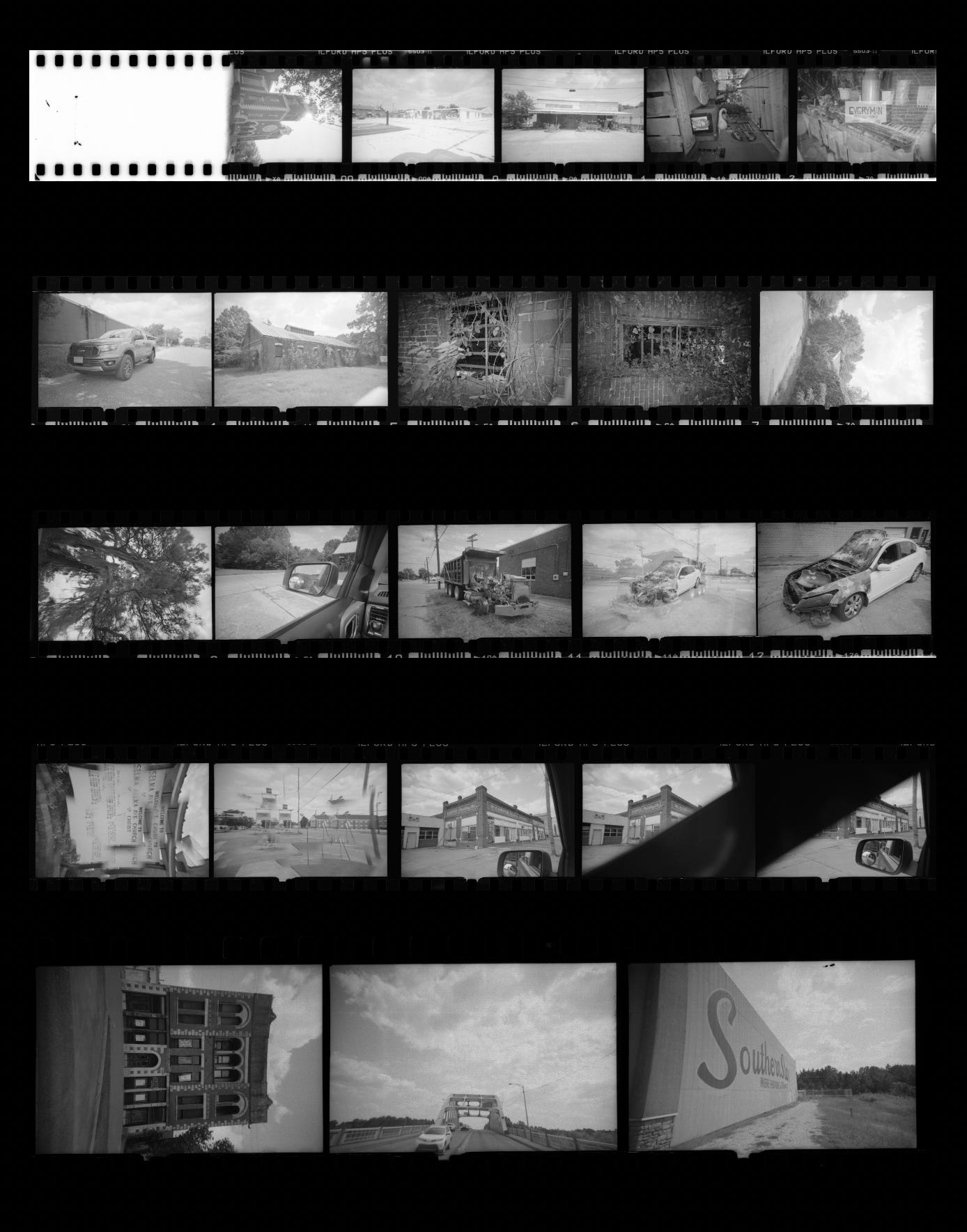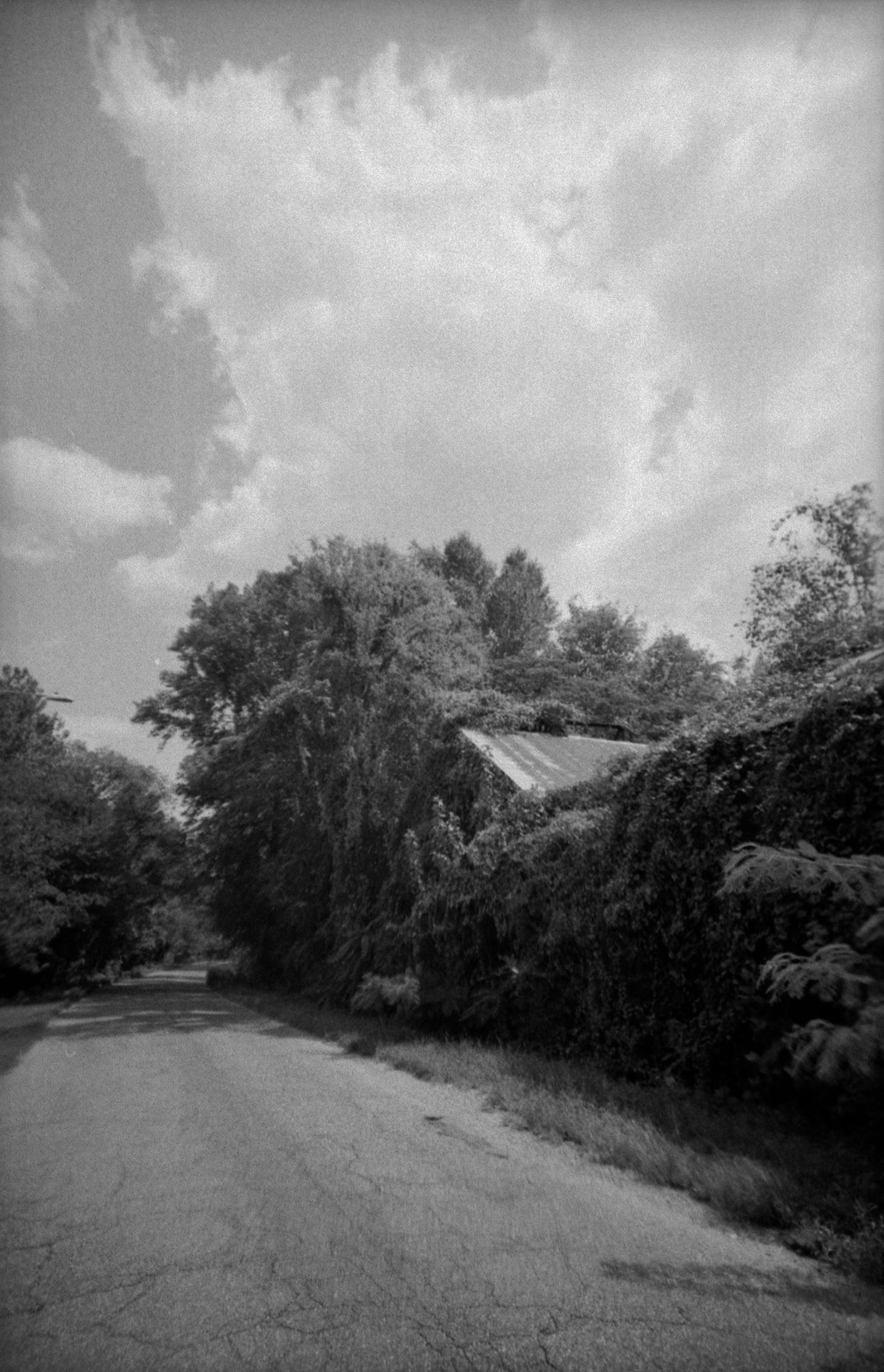In June, or maybe July, I purchased the LomoApparat because I wanted a fun, thought-free 35mm film camera that I could throw in any bag to use whenever I wanted. I went with the LomoApparat because I liked the idea of having a wide 21mm lens to push me out of my comfort zone (as I am not a wide-angle shooter) and the fixed aperture of f/10 and shutter speed of 1/100 meant that it should work well for me as I mostly shoot in well-lit areas. The addition of a built-in flash, flash gels, and 3 creative filters were all bonuses for me, but not the main selling point. Like most things that I purchase, the LomoApparat sat around unopened on a shelf for a few months until I was given a reason to test it out.
Jump forward to a few weeks ago, I found myself headed to Selma, AL on an assignment and I decided to bring the LomoApparat along with a roll of Ilford HP5. I knew that bringing a black and white film stock along to test out a camera that allowed me no control would be risky but, if I can be honest, I didn’t want to pay to have a test roll of color film processed and I can process black and white film at home. Given that this was a just test roll with a plastic camera, I am surprisingly pleased with how well the images turned out.
Experience
Using the LomoApparat was simple enough. The camera loads just like any other non-motorized film-advancing camera; drop the film in and then advance, fire, and repeat until you see the 1 on your frame counter. When taking a photo, just frame your shot in the viewfinder and shoot. No muss, no fuss. The flash is automatically activated when the camera is set to N mode (not sure about B mode as I have not used it yet), but it can be disengaged with the tap of a button. There is a switch on the rear of the camera that lets the shutter cock without having to advance the film and this allows for easy multiple exposures. As mentioned before, the camera is bundled with a handful of creative tools, but I only used the Splitzer and Kaleidoscope filters during this roll.
Issues
I encountered two issues while using the camera. The first was that the advance wheel hurt to use. Now this could be because I shot an entire roll of film in about 30 minutes (which required a lot of wheel usage within a short amount of time), but nonetheless, it was uncomfortable from the start and painful by the end. The second issue that I encountered came after finishing the roll. The rewind knob was even more painful to use than the film advance wheel. In the end, however, neither made me regret my purchase.
After processing and scanning the negatives, I noticed that some of the images show ghosting from the sprocket holes and I’m not 100% sure how this occurred. Additionally, my thumb and fingers make cameos in a few frames due to the wideness of the lens, but I’ll chalk these up to happy accidents.
Takeaways
In spite of the issues mentioned above, I absolutely love this camera. The camera itself is beautiful and easy to use. The resulting images are outstanding and imperfect which makes me feel more open to experimentation in the future with this camera. I think, in the future, I’ll either use Kentmere Pan 100 or Pan 400 to really lean into the “toy camera” vibe of the final images as both film stocks produce grainier results when compared to HP5.
Be kind to yourself and each other,
Joshua R. Williams










Great shots - love these lo-fi cameras and their idiosyncrasies - not sure about the sprocket hole issue but I always used to love with the Holga how if you took photos on the 'move' with the weird long action shutter button you'd get these 'ghosts' appearing ...
Lovely really!